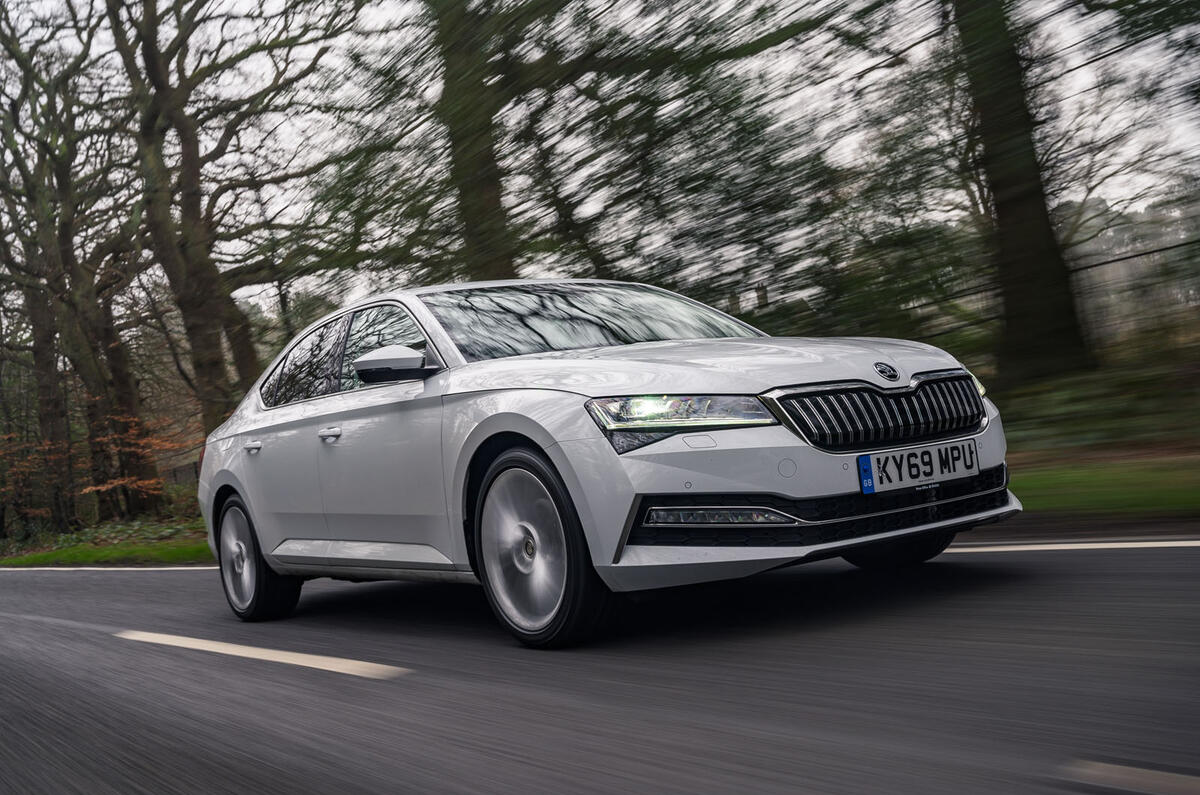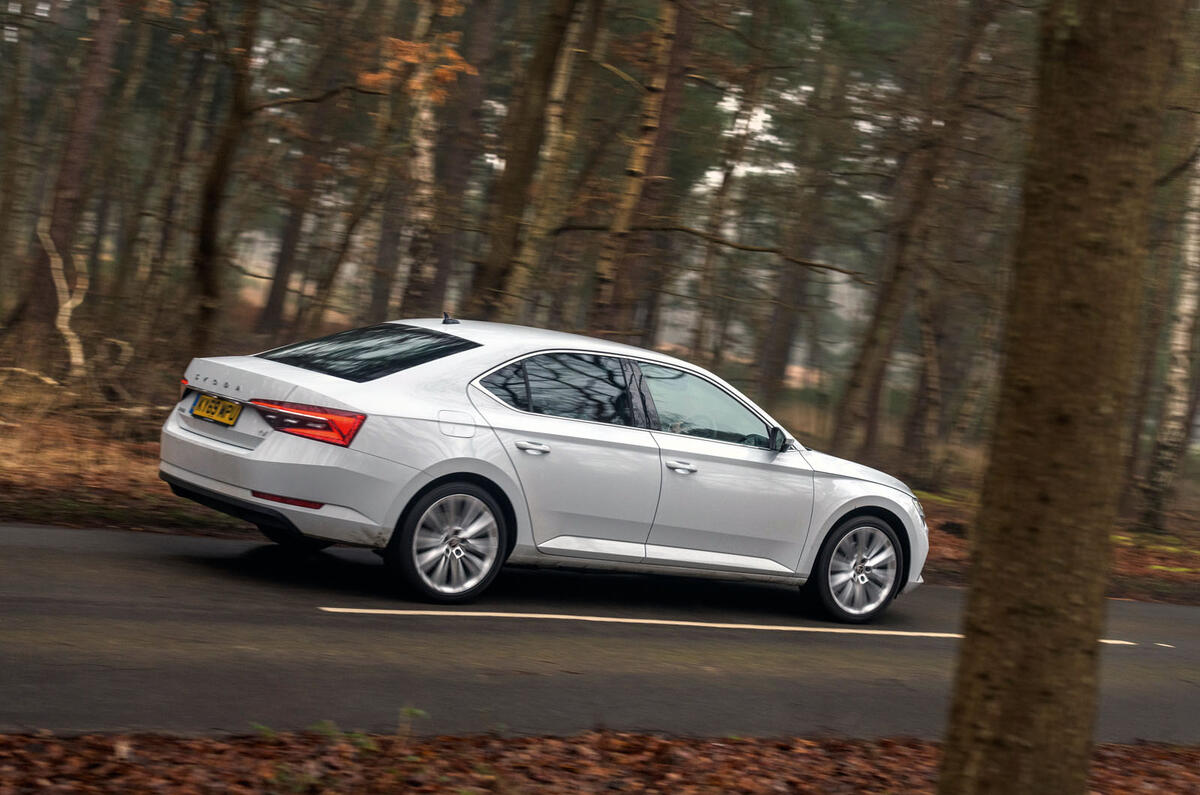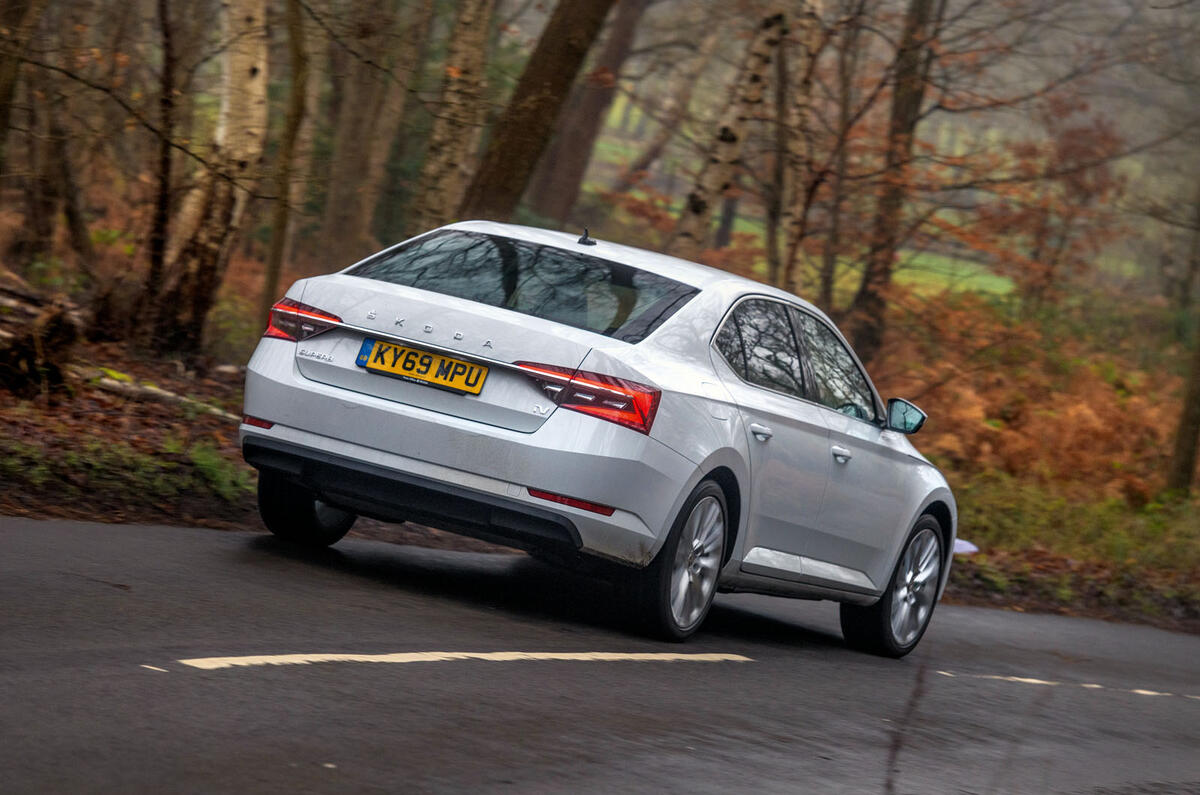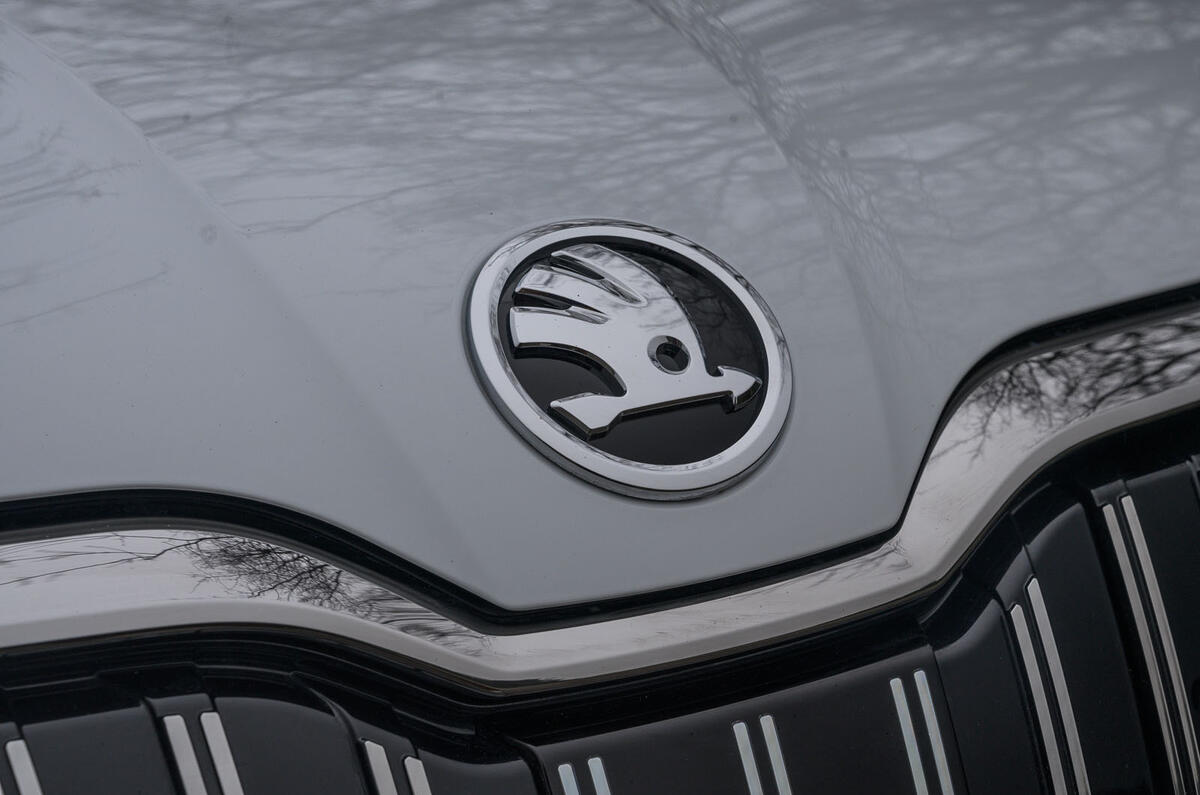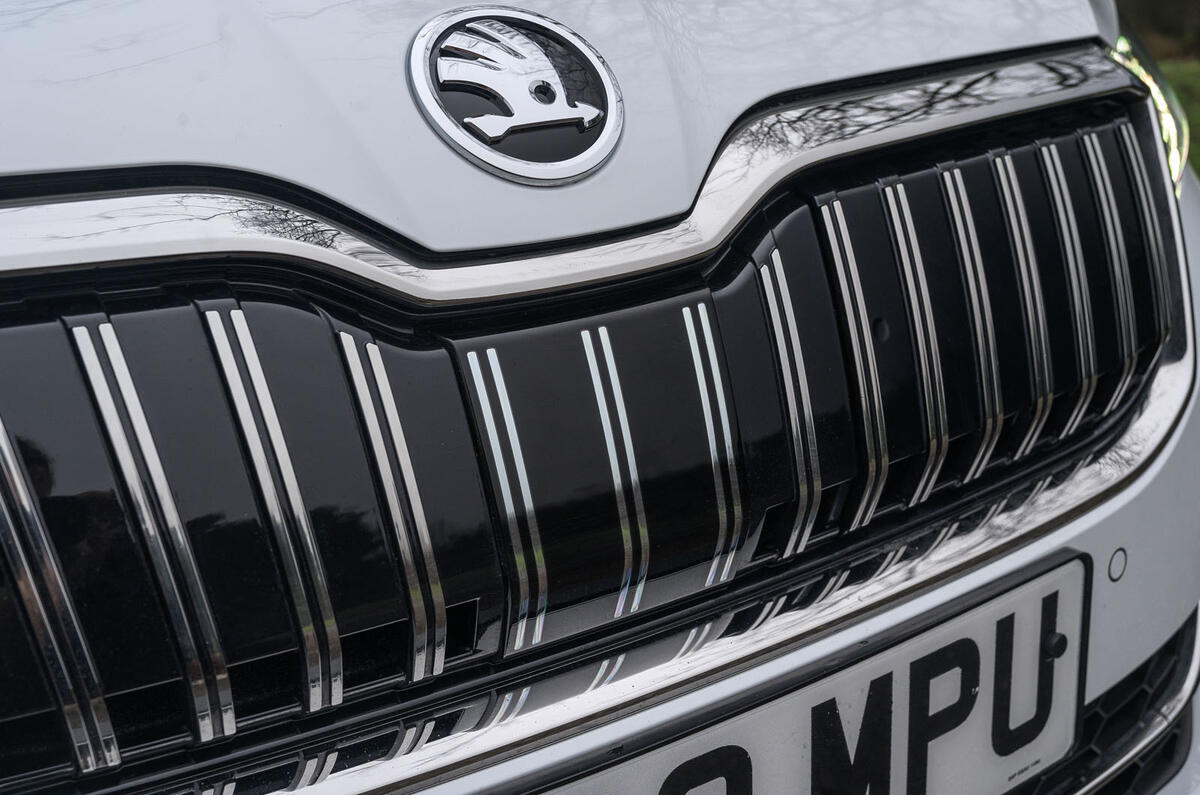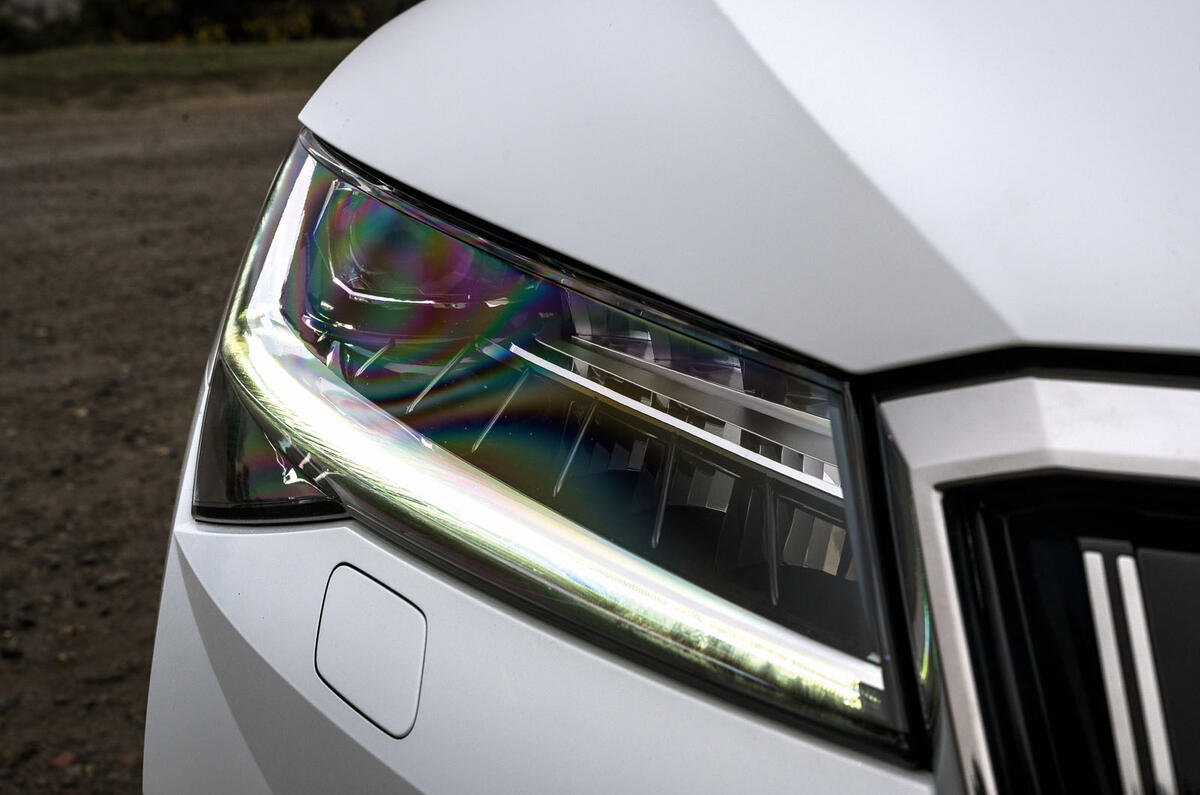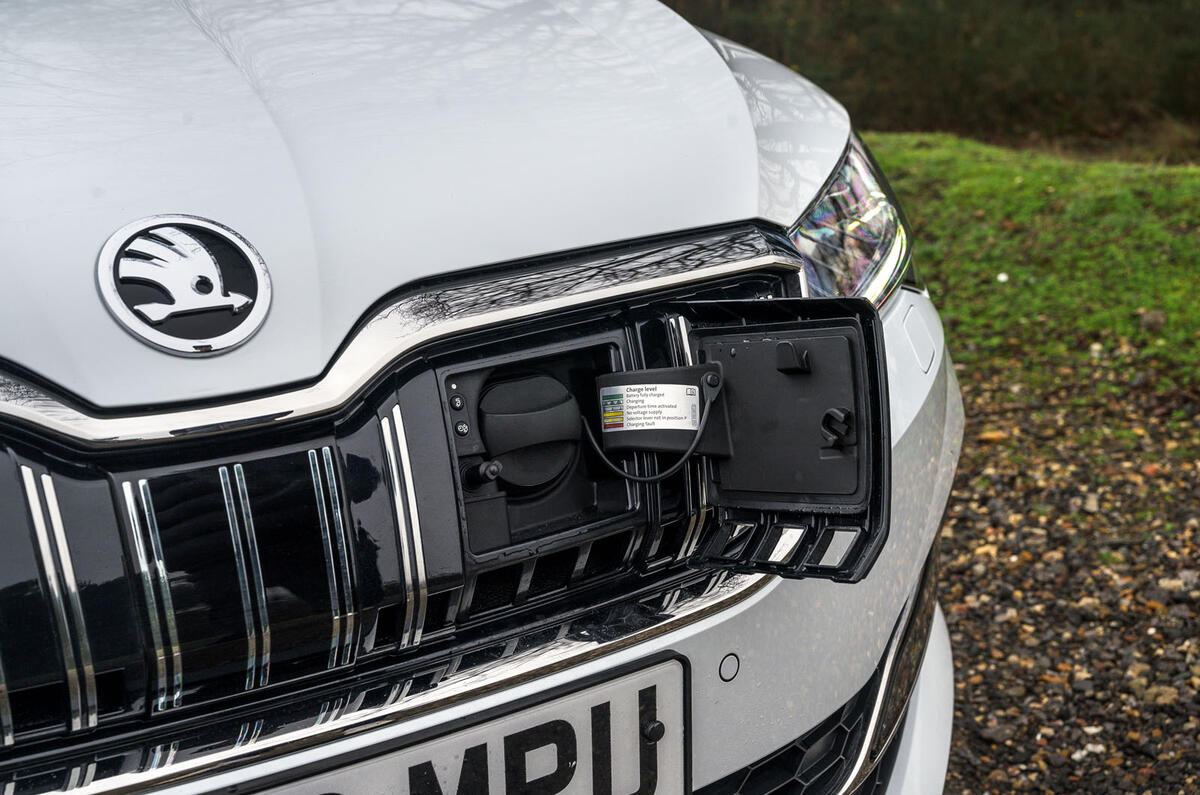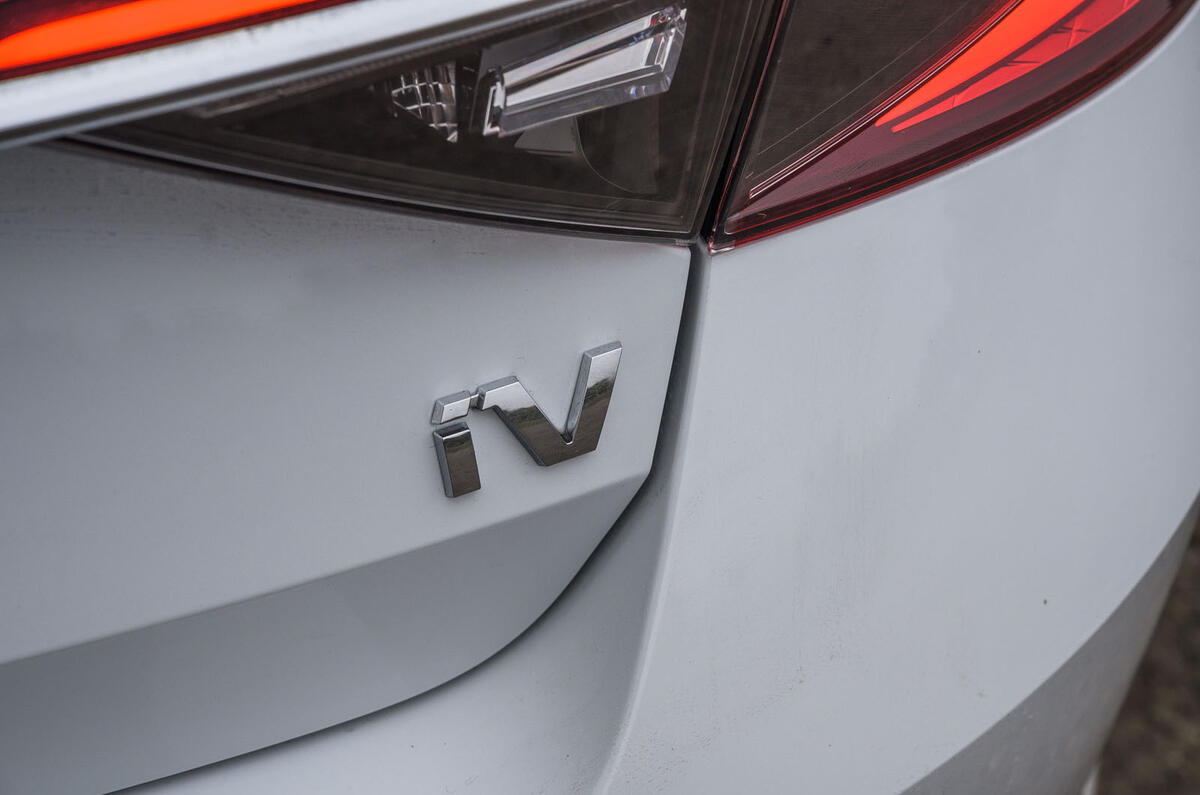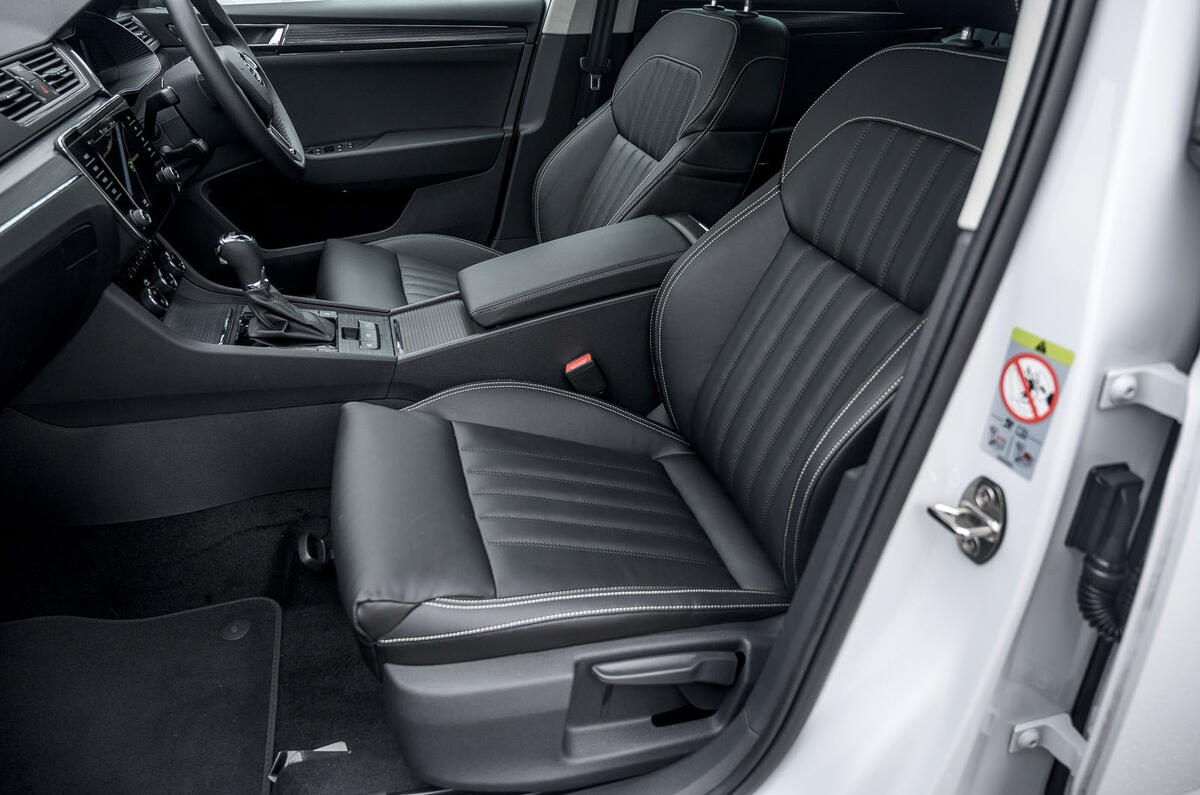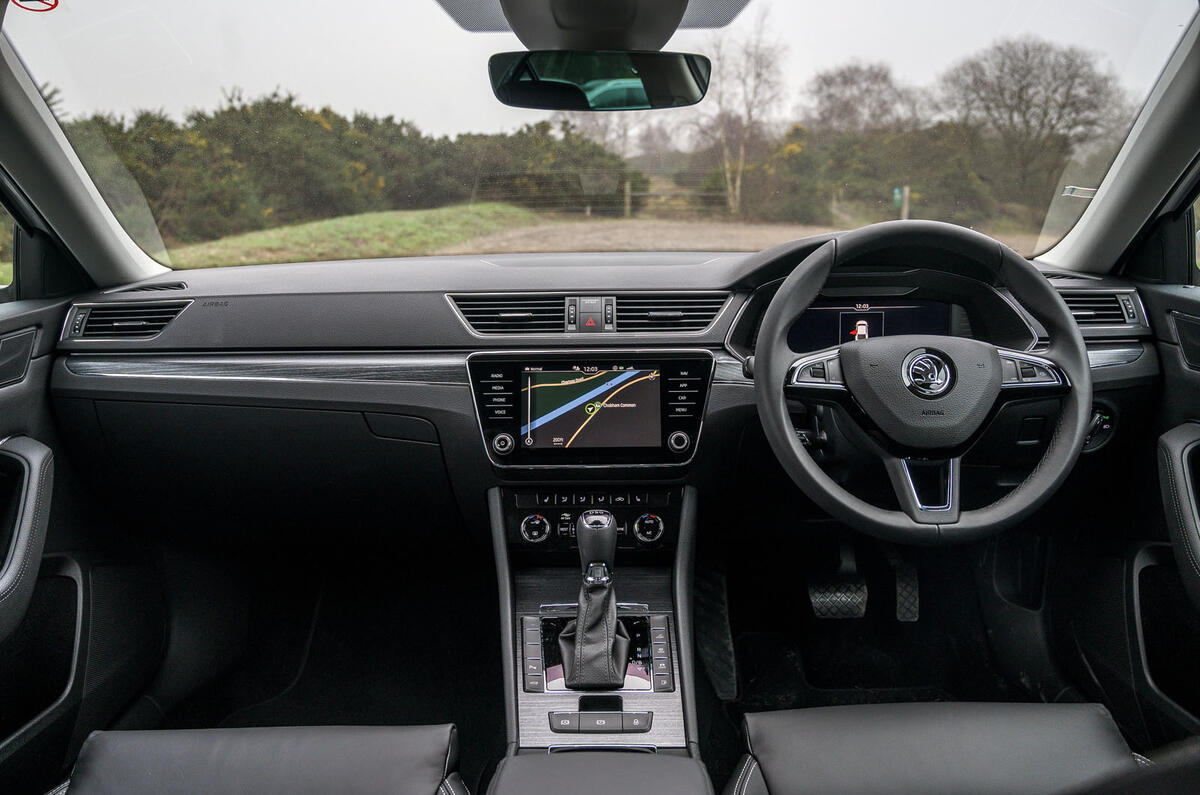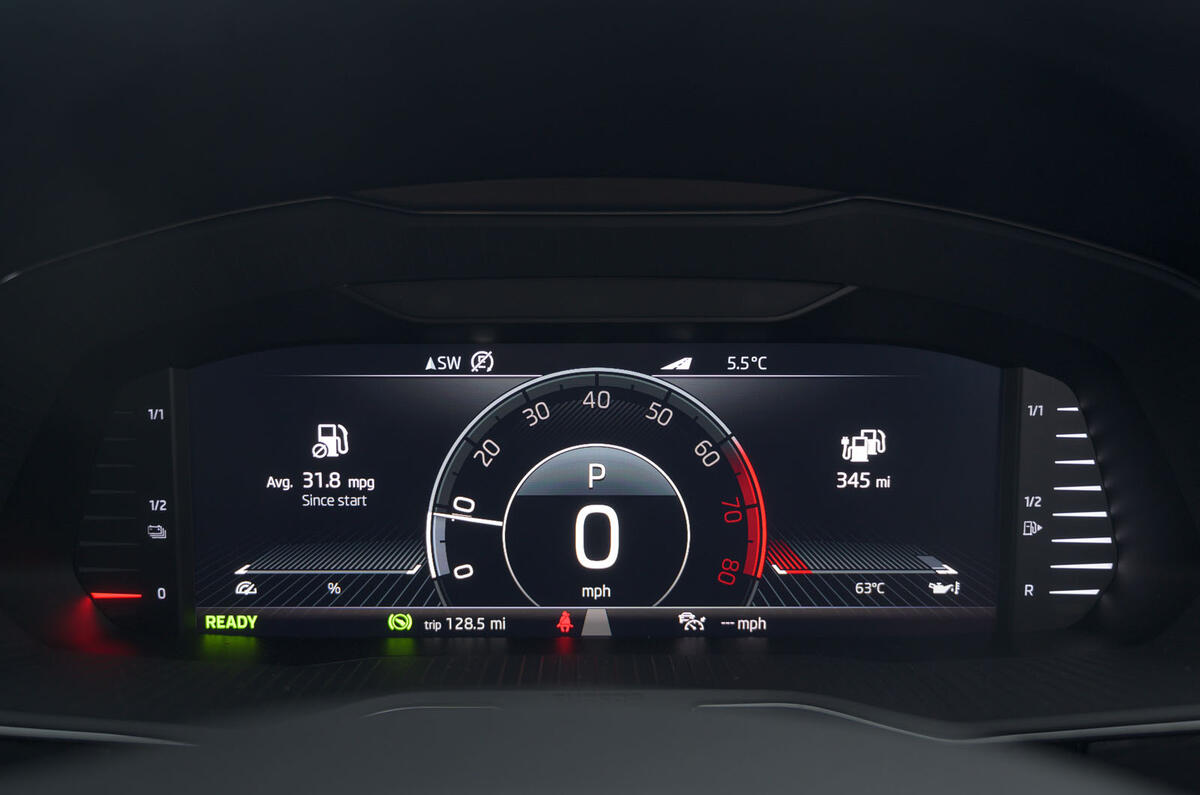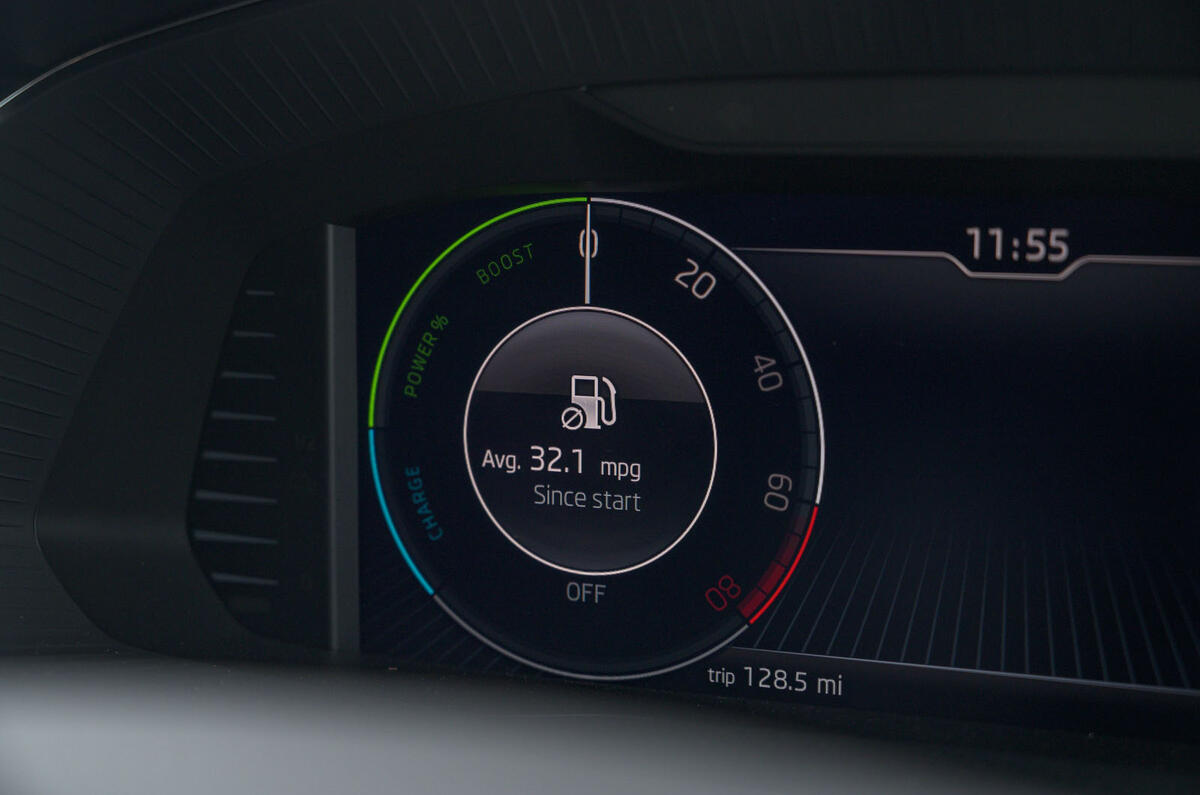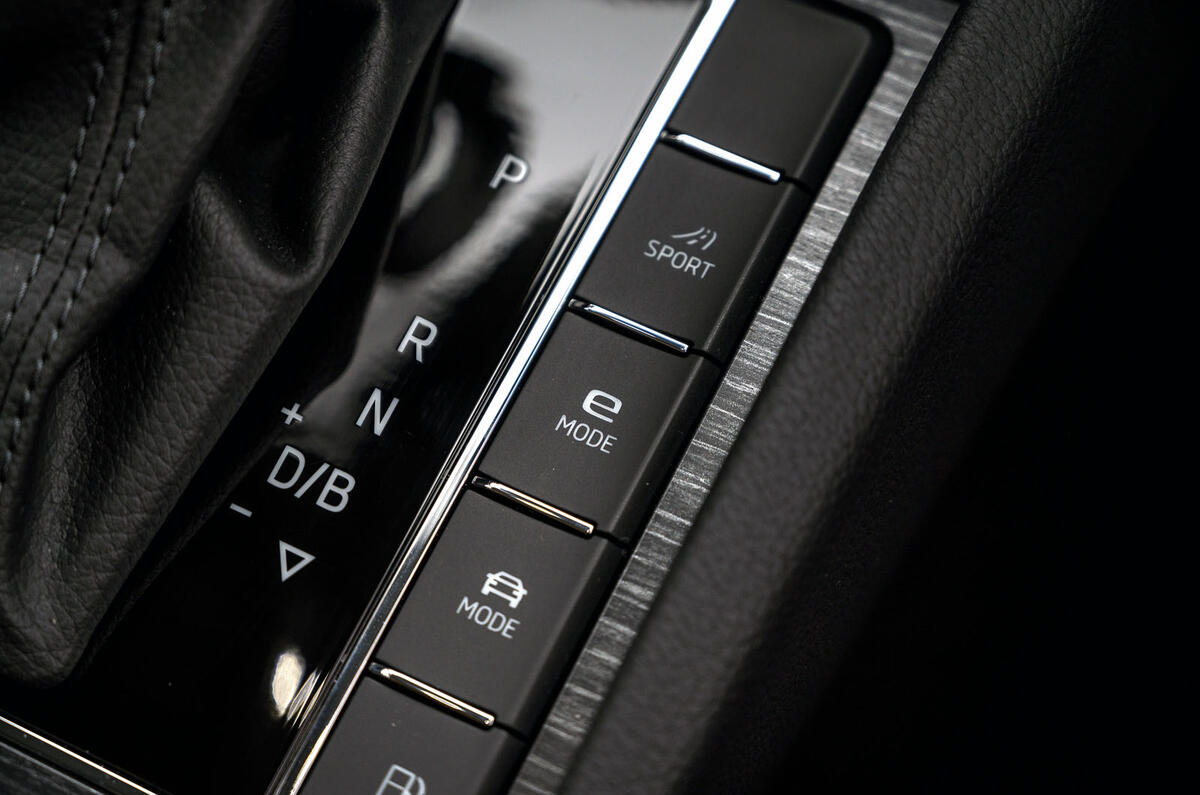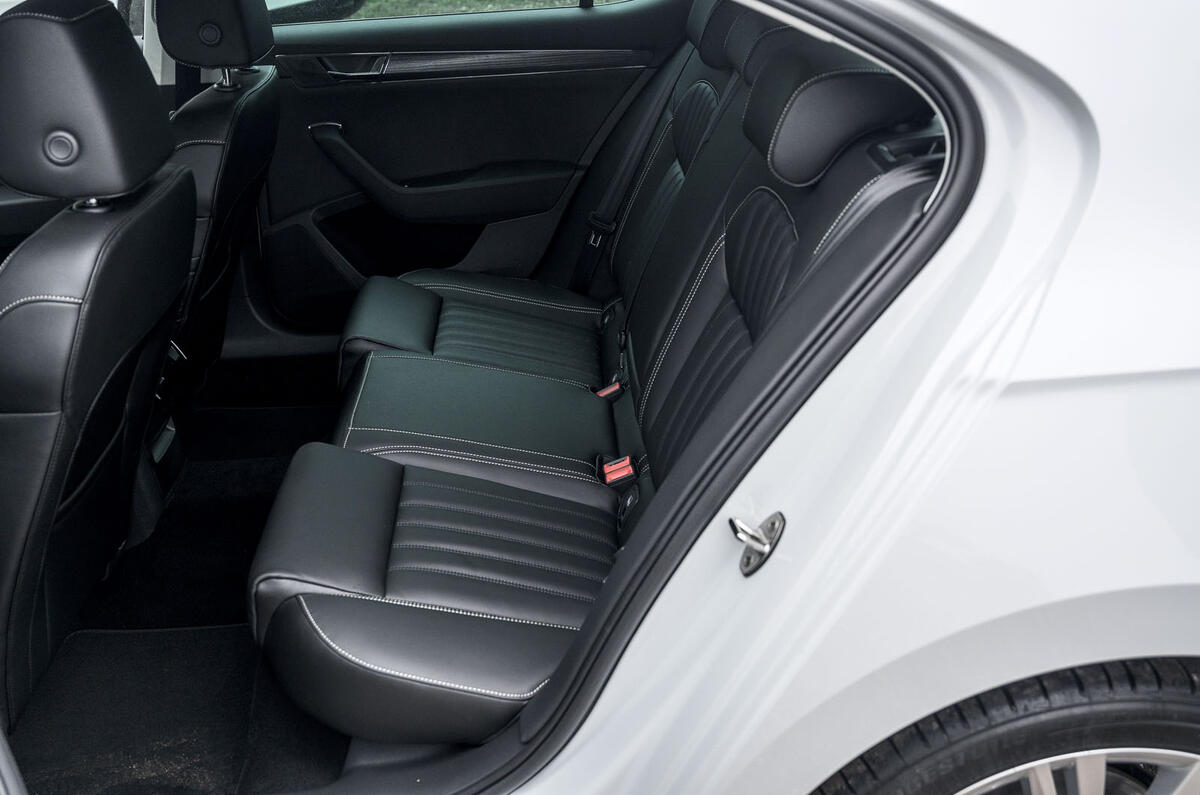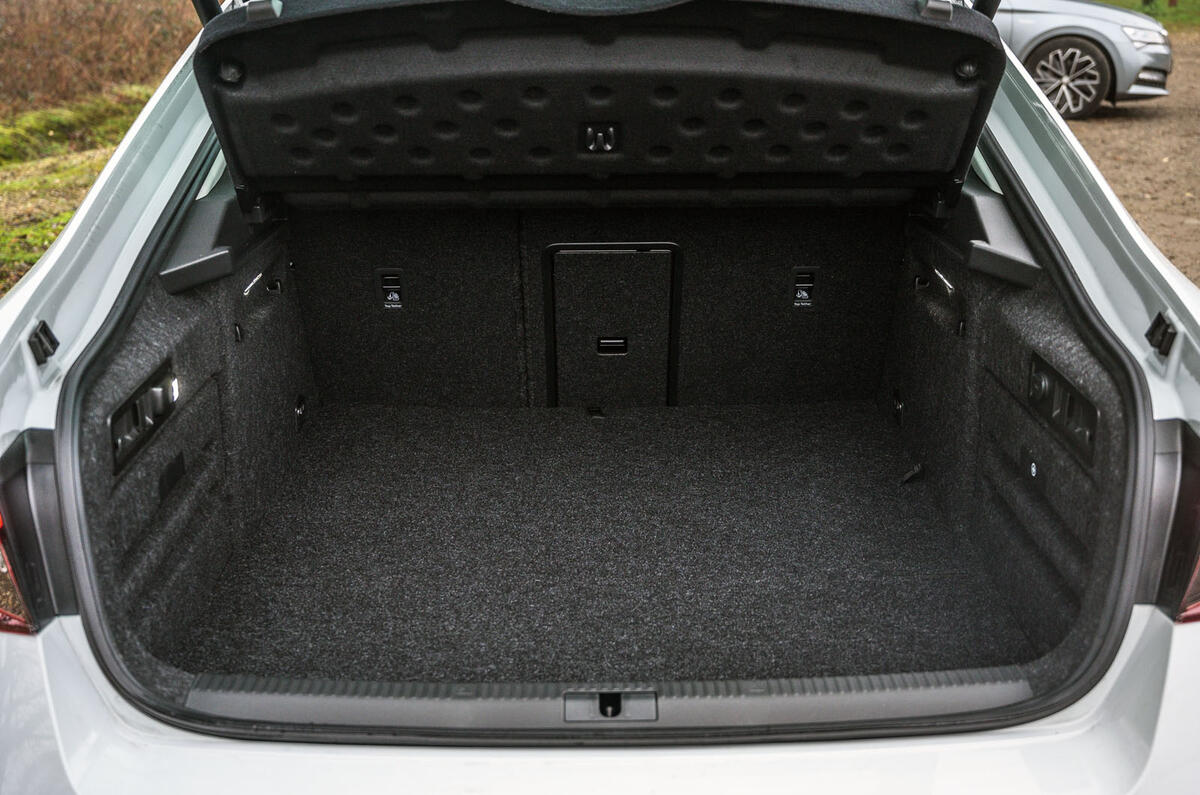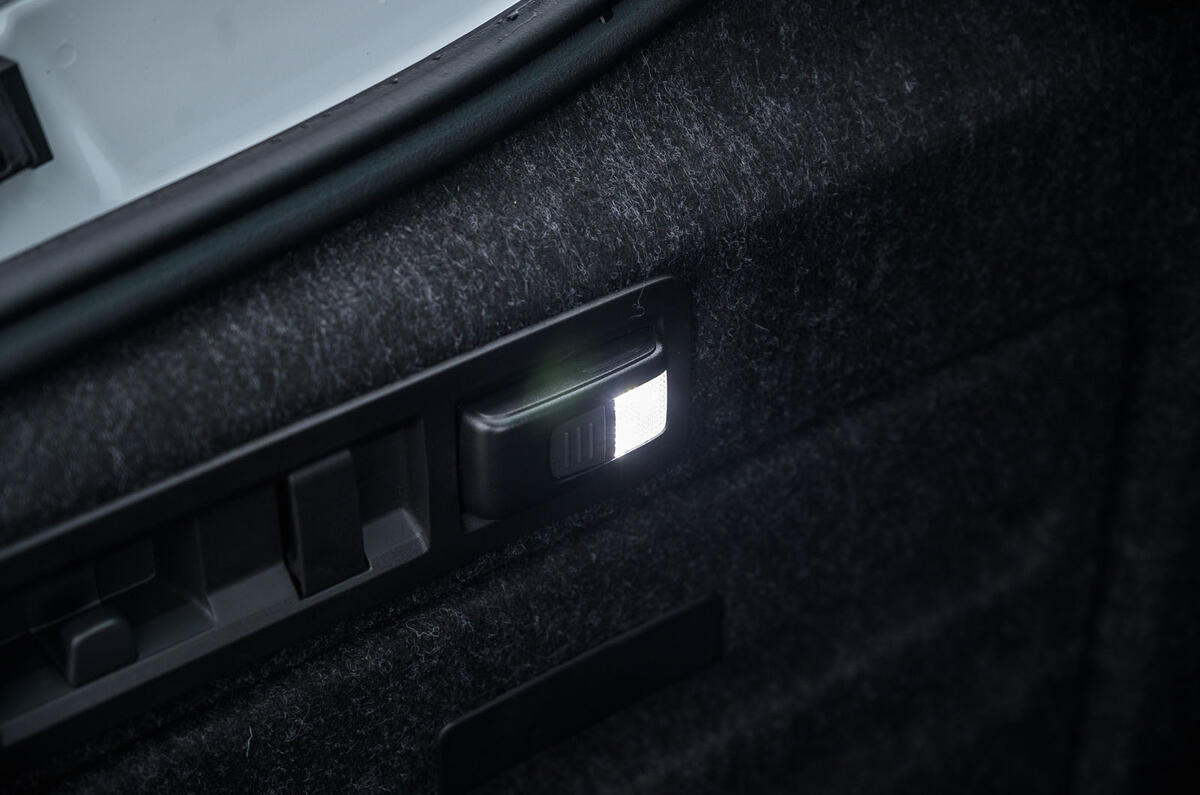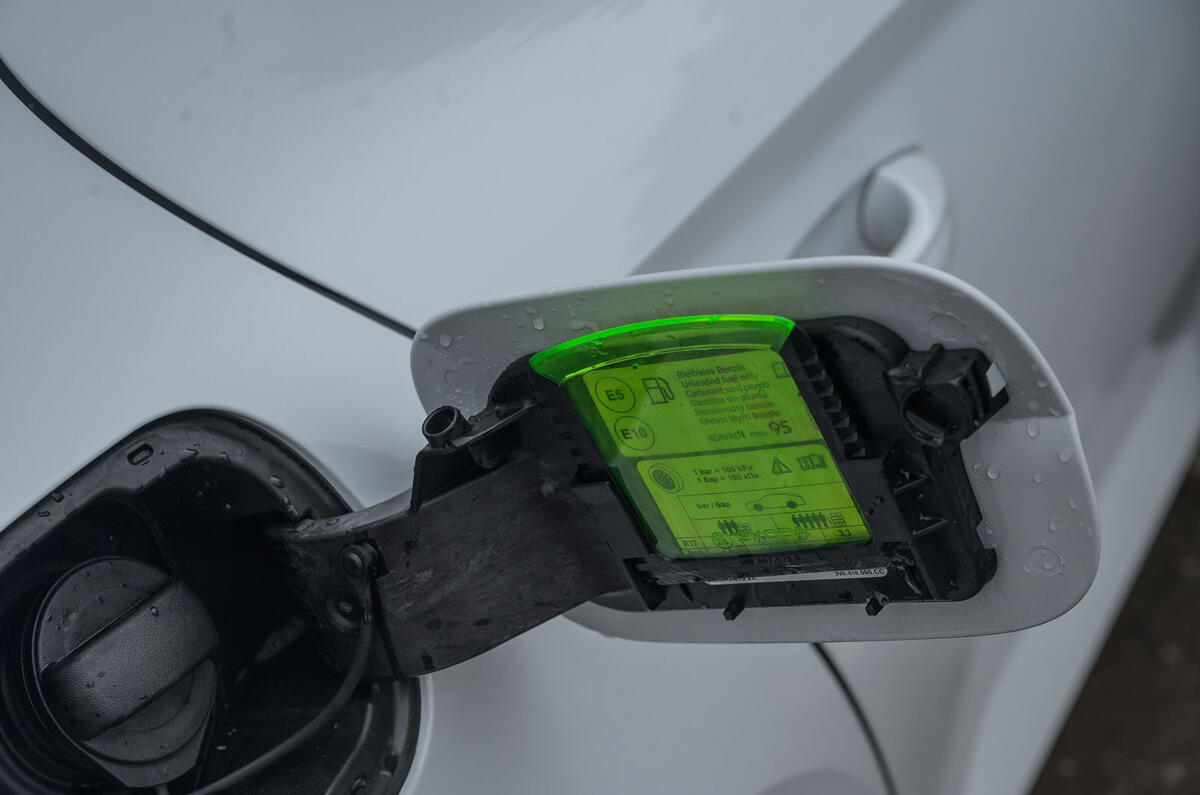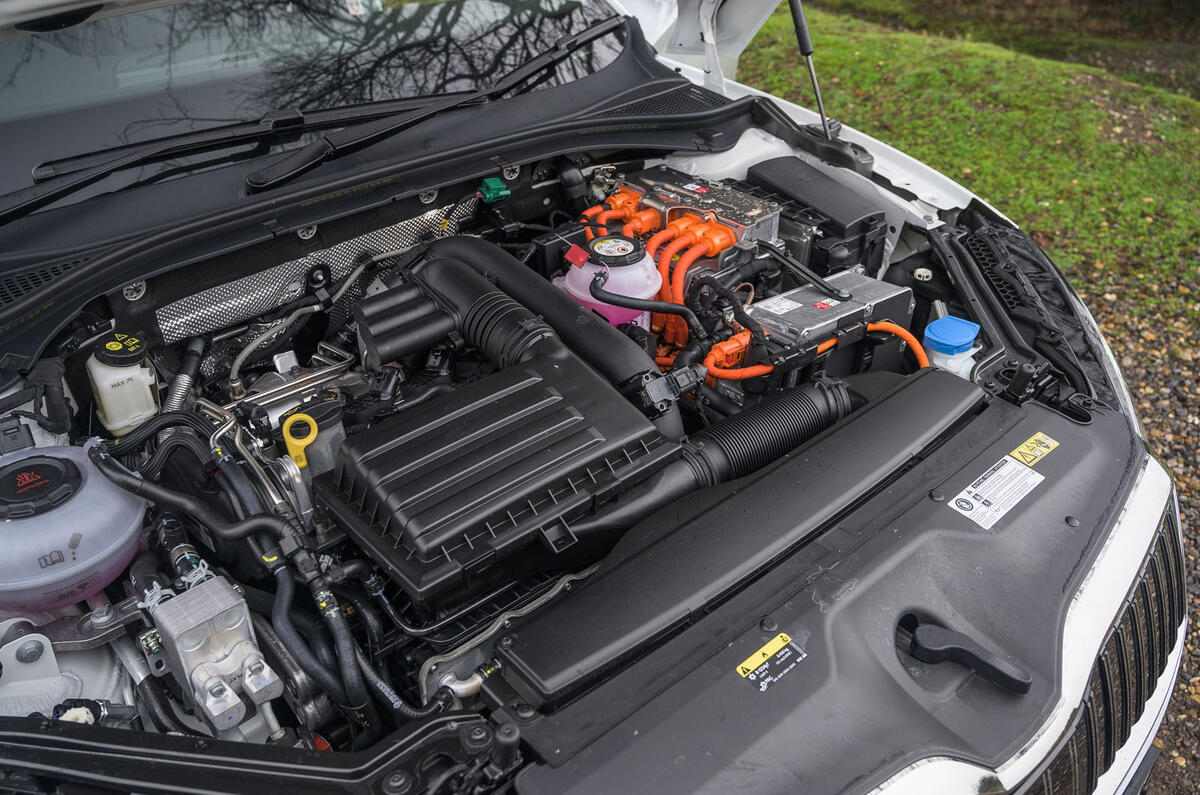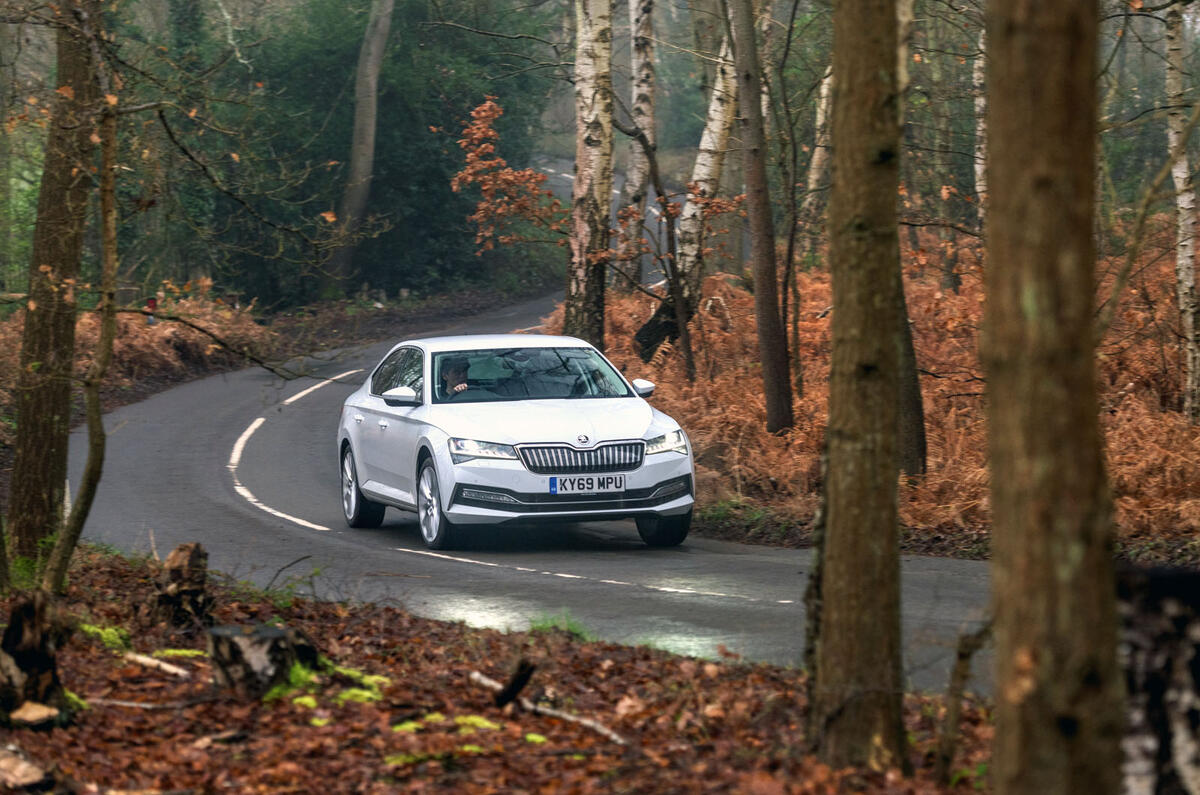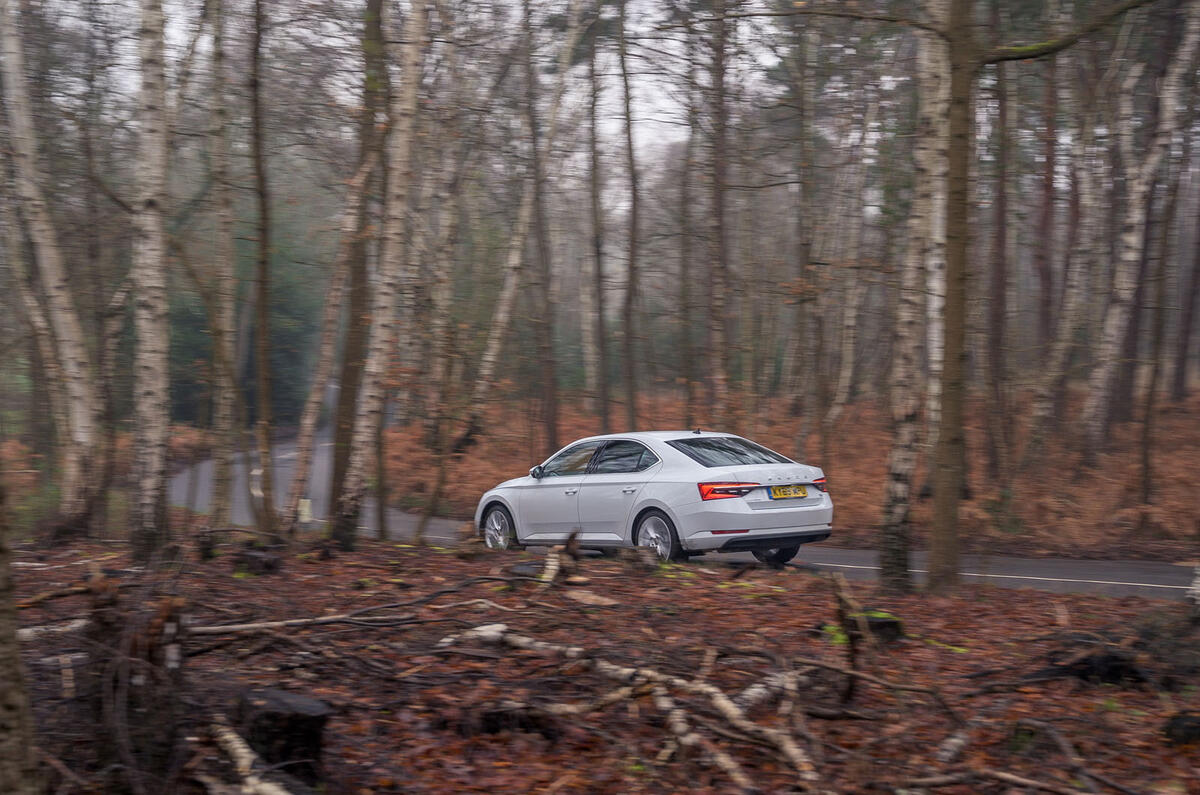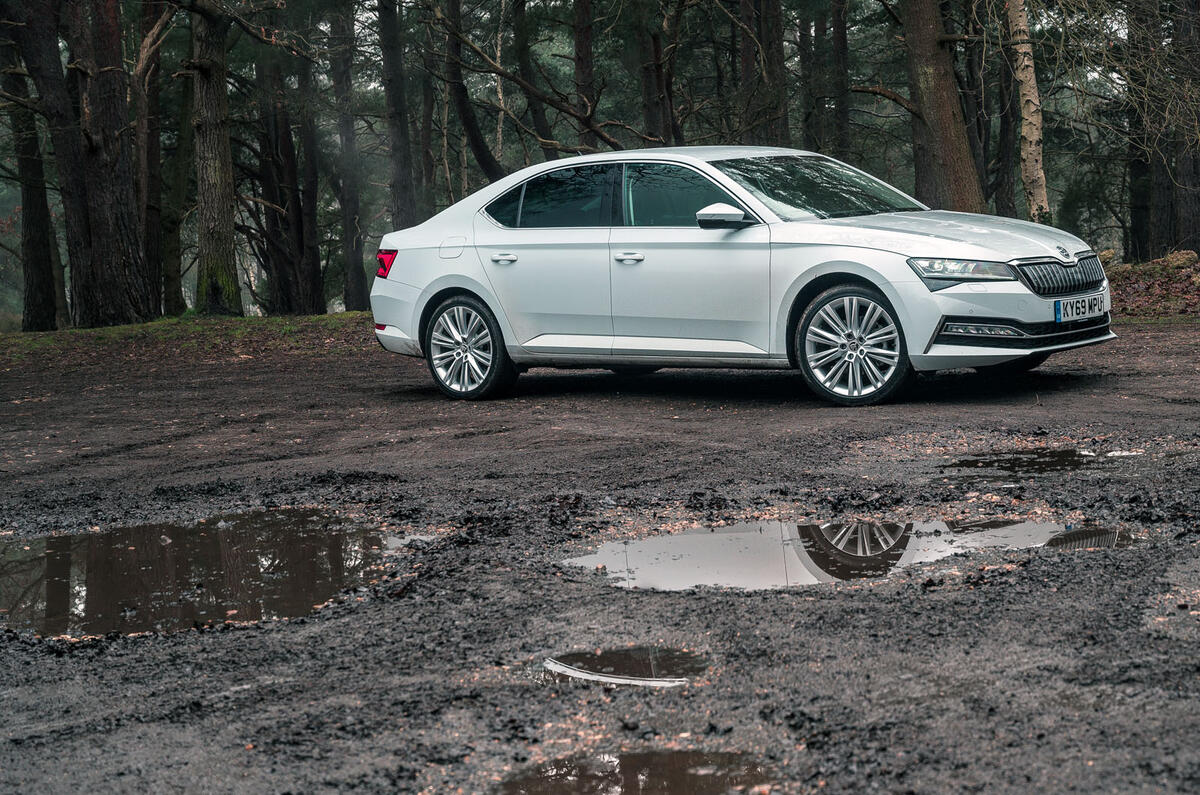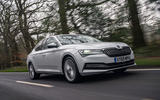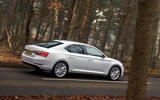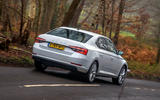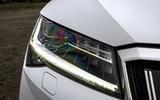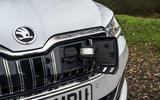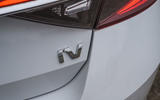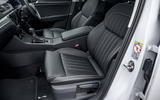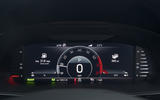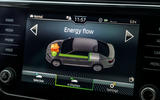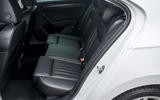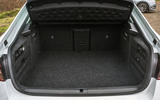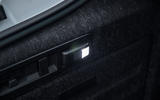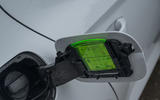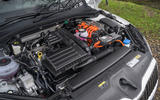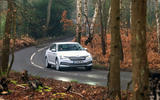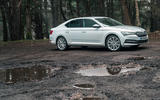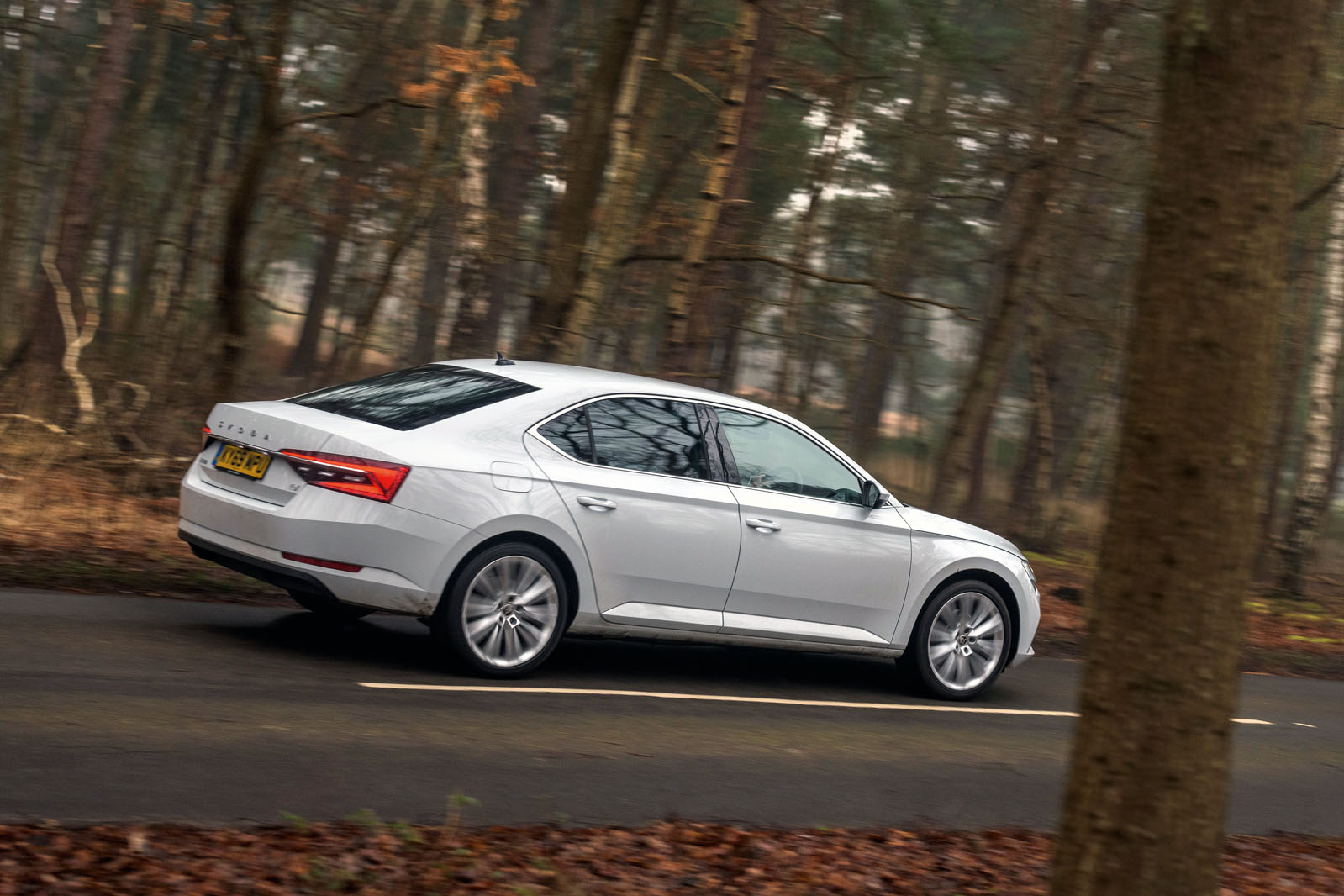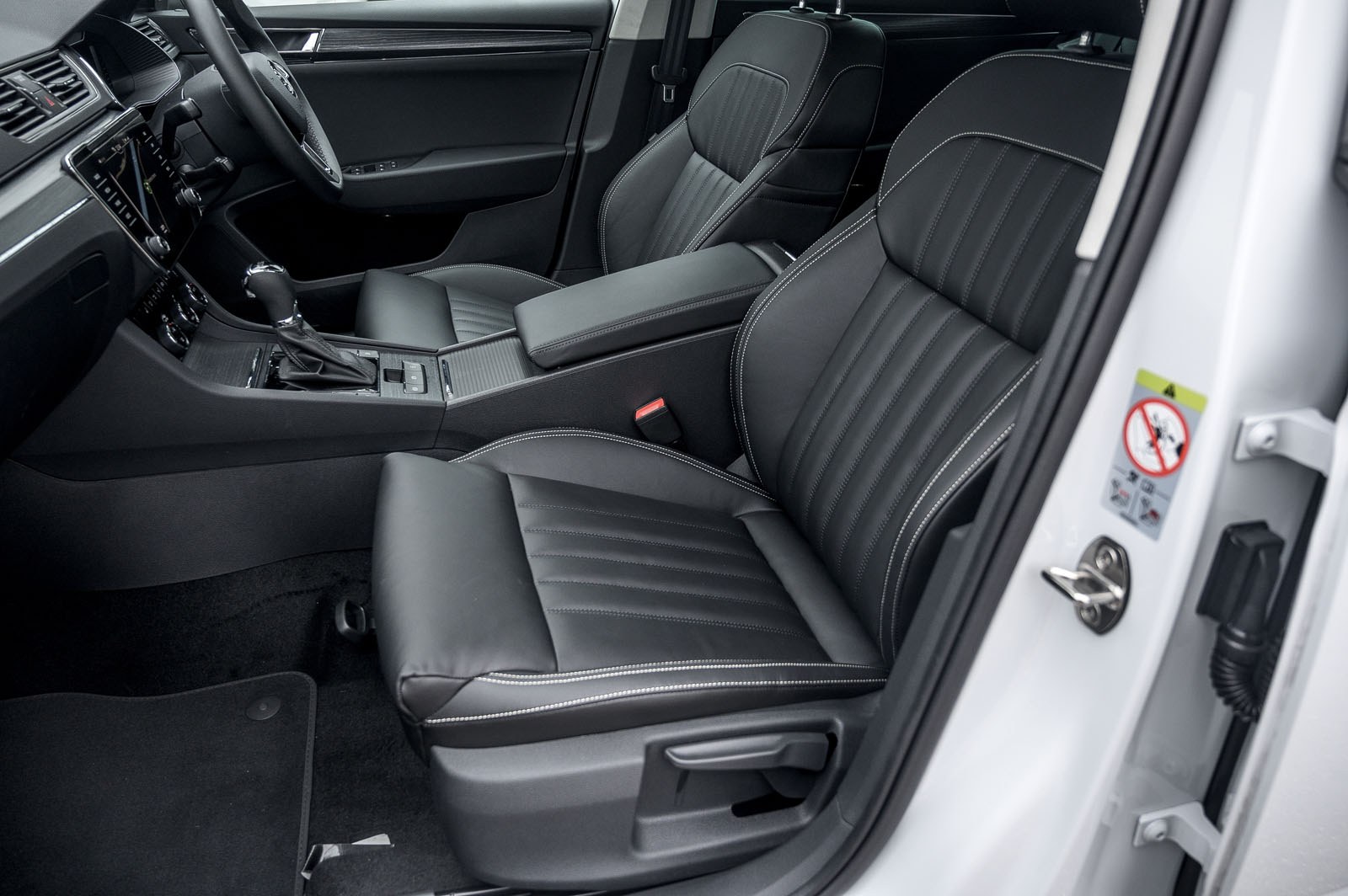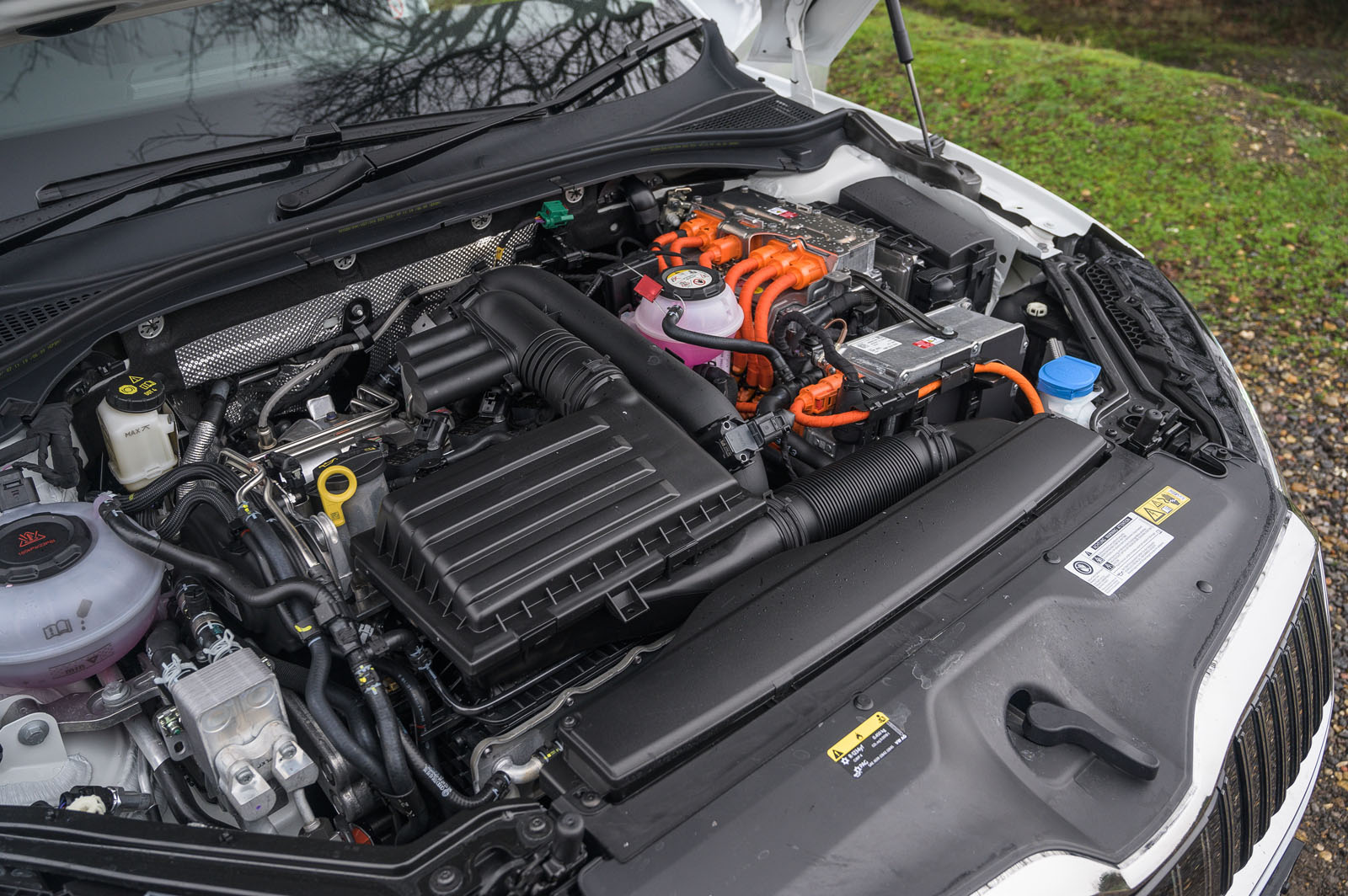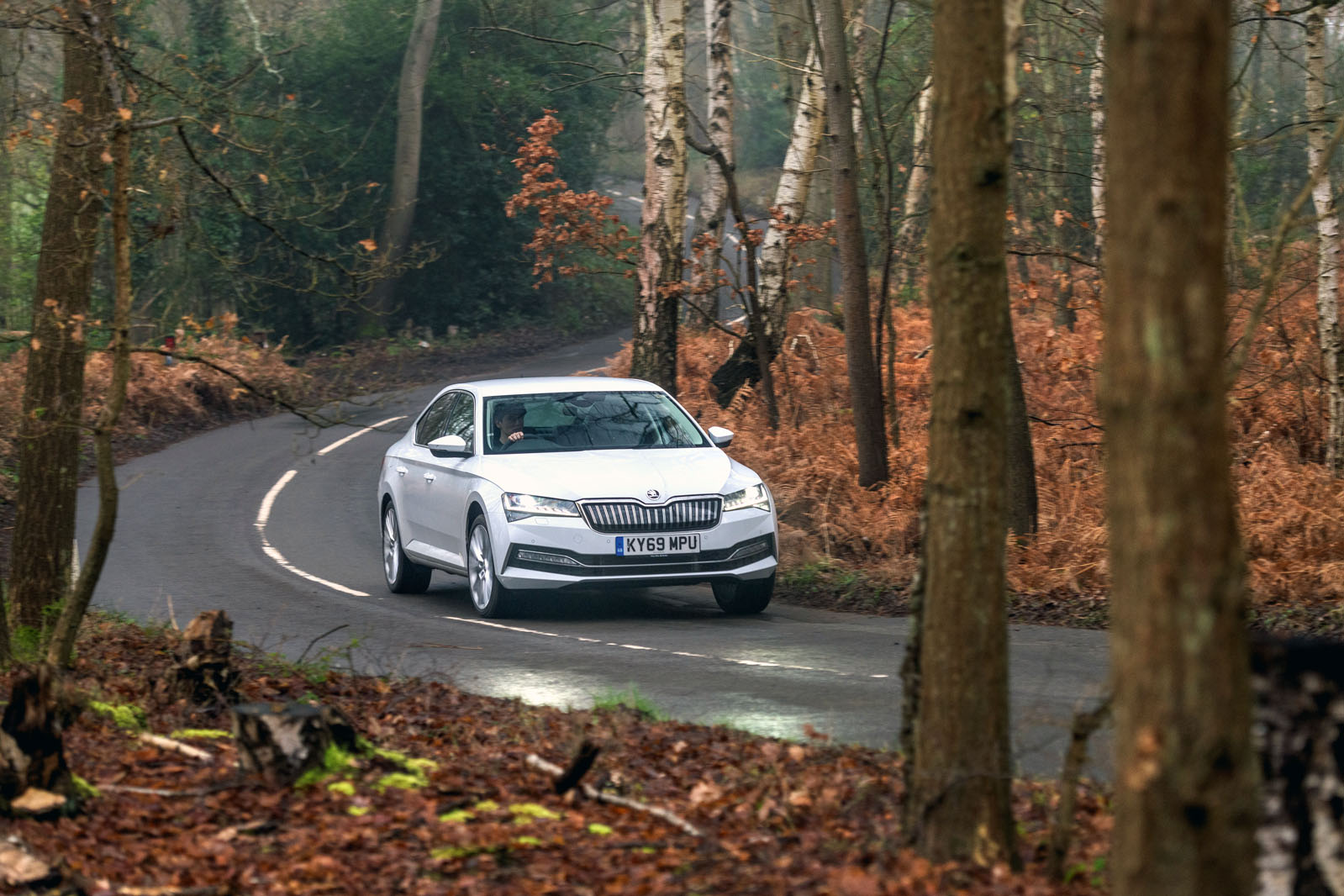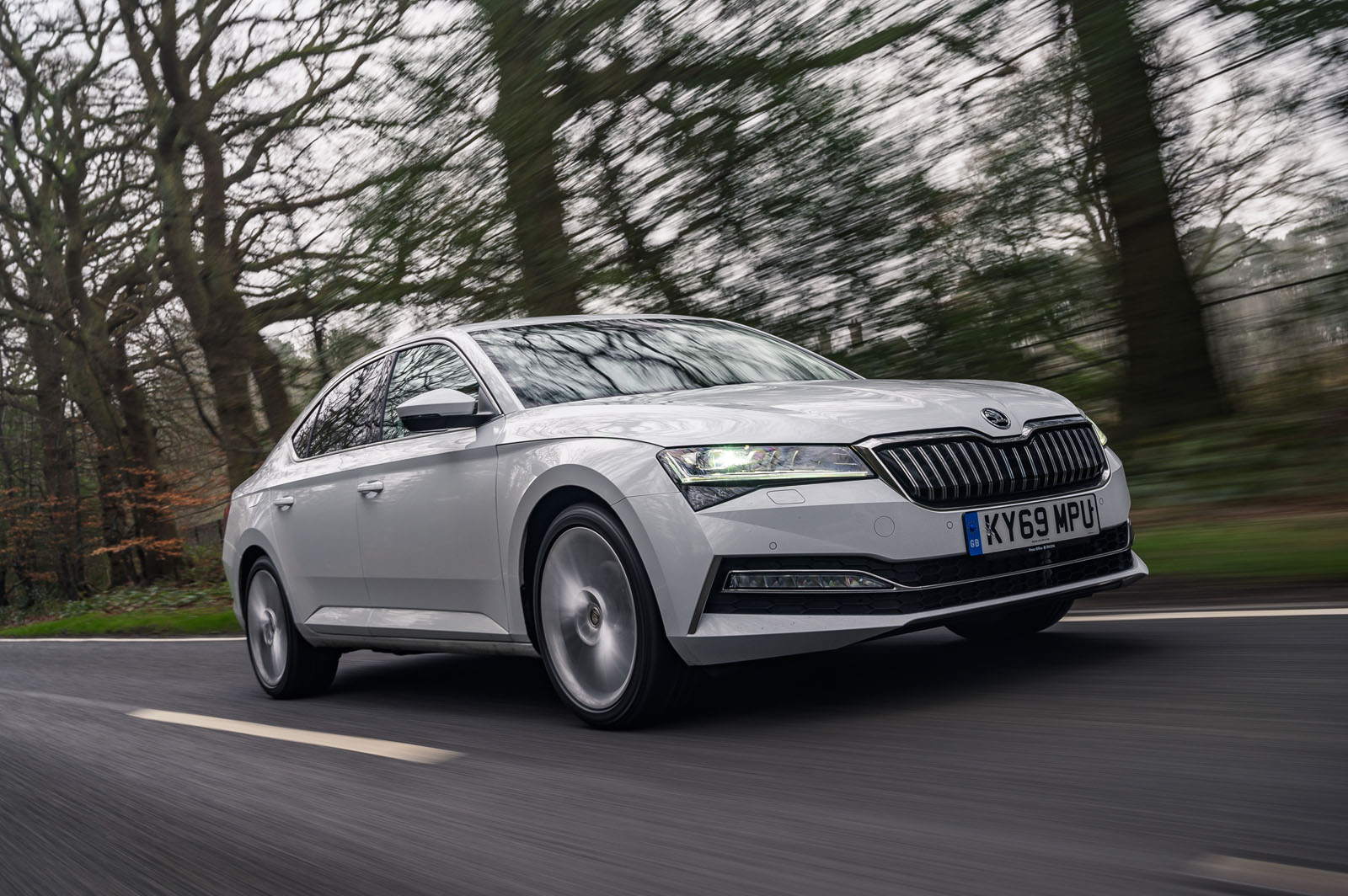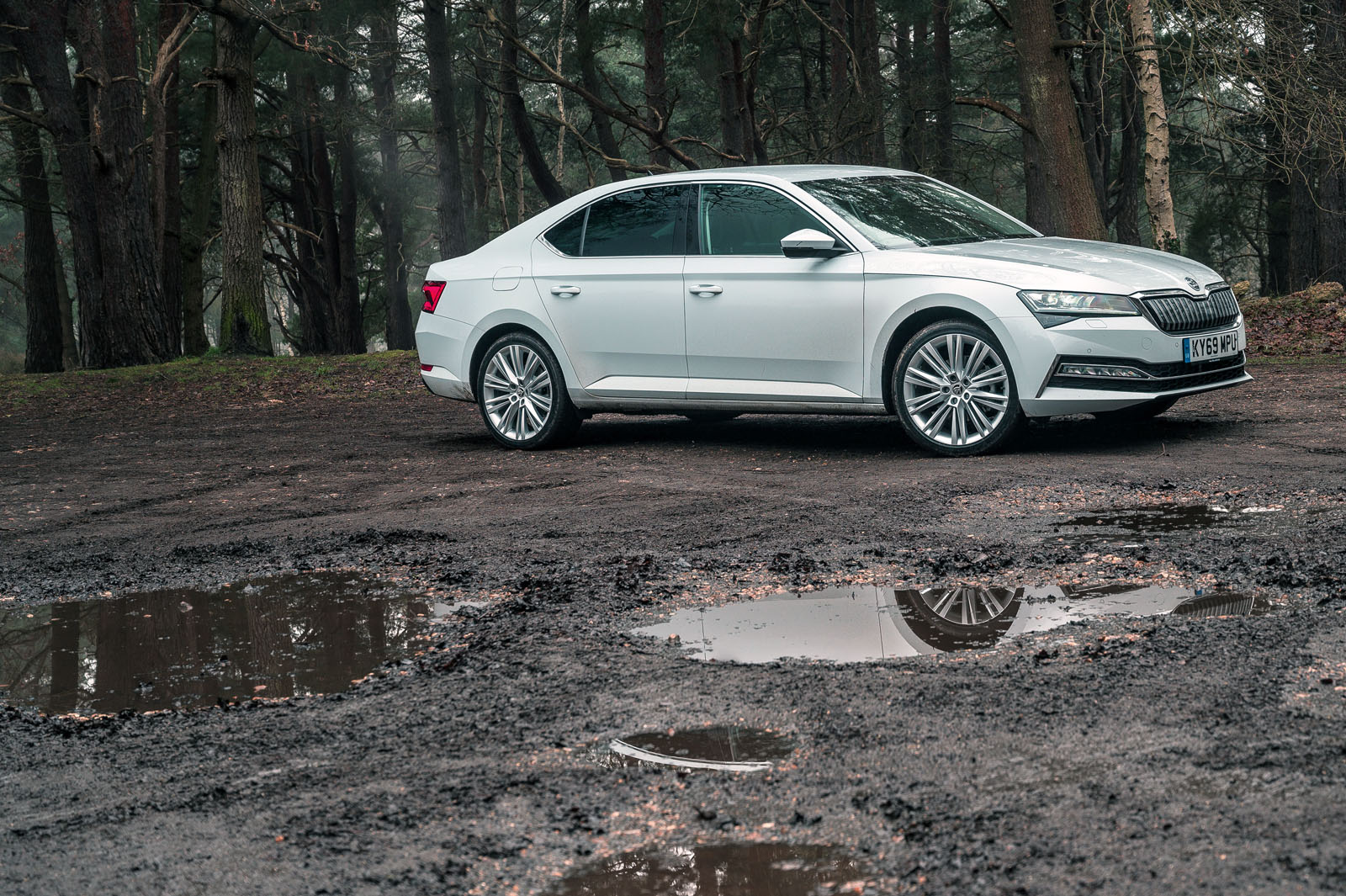As an already large car that makes intelligent use of its size, the Superb is ideally placed to weather the compromises so often enforced by plug-in hybrid powertrains. Skoda places power electronics under the boot floor, so the luggage capacity falls, but with 485 litres remaining, we can’t imagine too many owners will feel especially inconvenienced and, in practice, it is only the underfloor storage compartments that are lost.
It’s worth remembering that the Superb iV is also available with an estate body, and that elsewhere inside the cabin it remains luxuriously proportioned, with rear head and leg room still comfortably ahead of comparably priced rivals’. However, one tester did point out that families attempting to fit three child booster seats across the back bench may be better off looking elsewhere – an MPV, perhaps.
The cockpit itself is uneventful and less inviting in terms of material richness than the Volkswagen Passat GTE, although there’s no question that Skoda has come an awfully long way from the days when its interiors felt outright cheap. Mid-range SE L models like our test car get pleated leather for the strangely flat but nonetheless broad and comfortable electric ‘sports’ seats, and the addition of privacy glass and various interior lightings lifts the ambience.
Conspicuous by its absence is much in the way of hybrid iconography, the only give-aways being an E-mode button on the transmission tunnel and various green graphics displayed on the 10.3in digital Virtual Cockpit, which comes as standard for SE L cars and replaces the traditional instrument binnacle.
Elsewhere, this cabin is geared for calm detachment rather than any level of excitement. Compared with the similarly sized BMW 5 Series, the seats set their occupants high, and with slim A-pillars and a generous glasshouse, visibility is better than most and contributes to the formal but relaxing ambience.
Skoda Superb IV infotainment and sat nav
The Superb iV comes with Skoda’s Amundsen navigation system, with its 8.0in display, as standard. It has excellent graphics and hallmark VW Group usability, despite the irritation of greasy fingerprints sullying the otherwise slick presentation. It’s possible to upgrade to the 9.2in Columbus system, but a lack of volume or map zoom knobs may affect usability.
Meanwhile, the Virtual Cockpit is standard with Columbus (which also incorporates gesture control) but optional with Amundsen. USB provision is excellent in either case, with Type-C sockets at the back of the centre console and in the rear, and a Type-A socket in the storage bin under the front armrest.
Unique to the plug-in hybrid is the ability to remotely initiate charging and to precondition the cabin – that is, set the temperature in advance of unlocking the car – via a smartphone app. There are also readouts that show how the powertrain is distributing power in real time and the car’s range and economy.


